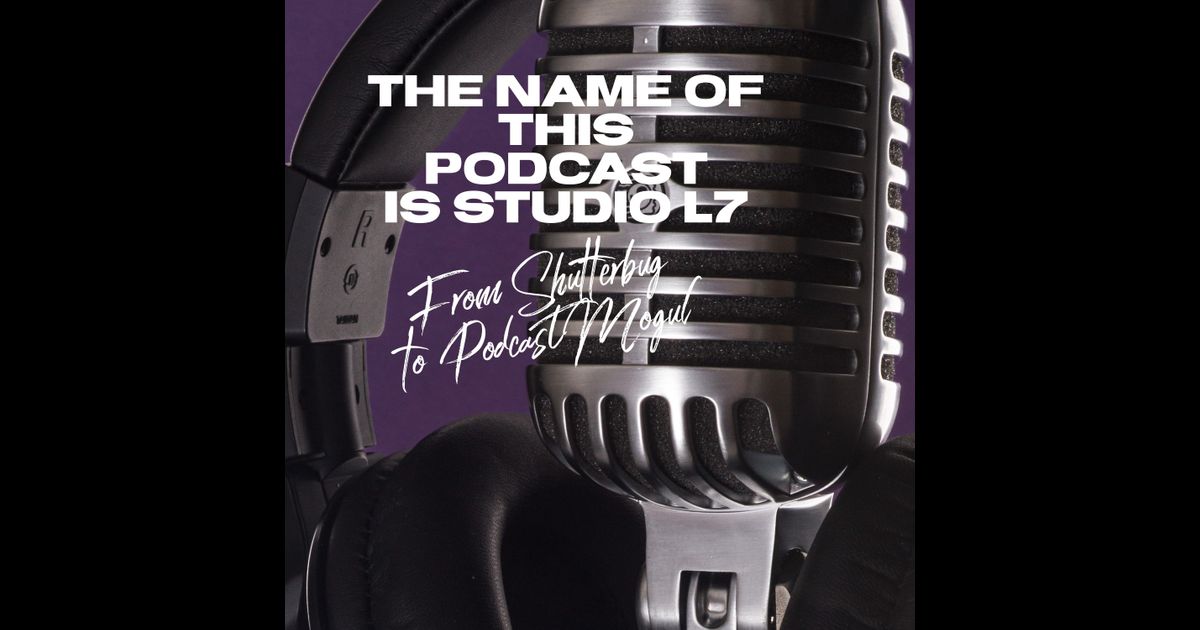Dynamic and condenser microphones differ in their construction and method of converting sound into electrical signals. Dynamic microphones are more durable and versatile, making them ideal for live performances, while condenser microphones are more sensitive and accurate, making them suitable for studio recordings and capturing detailed sounds.
Microphones play a crucial role in capturing sound and translating it into electrical signals. Two popular types of microphones are dynamic and condenser microphones. Understanding the differences between these two can help determine the appropriate choice for various applications. Dynamic microphones are known for their durability and versatility, making them favored in live performances and loud environments.
On the other hand, condenser microphones offer higher sensitivity and accuracy, making them well-suited for studio recordings and capturing intricate details of sound. We will delve deeper into the contrasting features and applications of dynamic and condenser microphones.

Credit: redcircle.com
Table of Contents
Dynamic Vs Condenser Microphones: An Overview
Choosing the right microphone can make a huge difference in the quality of audio recordings. Two popular options are dynamic and condenser microphones. While both serve the purpose of capturing sound, they have distinct characteristics that make them suitable for different applications.
In this section, we will explore the differences between dynamic and condenser microphones, highlighting the importance of understanding these disparities.
Plain Paragraph: Introduction To The Debate
When it comes to selecting a microphone, many audio enthusiasts engage in discussions comparing dynamic and condenser microphones. The debate centers around the differences in design, sound reproduction, durability, and the varied applications each microphone is best suited for.
Bullet Points: Importance Of Understanding The Differences
- Different designs: Dynamic microphones utilize a diaphragm that is attached to a coil, which moves within a magnetic field. On the other hand, condenser microphones have a more complex design with a thin diaphragm and a charged backplate.
- Sound reproduction: Dynamic microphones are known for their robust and sturdy construction, making them suitable for handling high sound pressure levels and harsh conditions. They are commonly used in live performances and on-stage applications. Condenser microphones, with their sensitivity and accuracy, are ideal for studio recordings and capturing finer details, making them popular among professional musicians and engineers.
- Frequency response: Dynamic microphones generally have a limited frequency response, focusing on the mid-range frequencies. In contrast, condenser microphones offer a wider frequency response, enabling them to capture a broader range of frequencies with precision.
- Power requirements: Dynamic microphones do not require an external power source as they generate electrical signals through electromagnetic induction. Conversely, condenser microphones need a power supply, which can be provided through batteries or phantom power from an audio interface or mixing desk.
By understanding the differences between dynamic and condenser microphones, you can make an informed decision when selecting the right microphone for your specific requirements. Whether you need a robust microphone for live performances or a sensitive one for studio recordings, knowing the distinctions between these two types will ensure you achieve optimum audio quality.
Dynamic Microphones: Features And Applications
How Dynamic Microphones Work
- Dynamic microphones use a simple yet effective design that allows them to capture sound in a wide range of situations.
- They work by using a diaphragm, a movable coil, and a magnet. When sound waves hit the diaphragm, it vibrates and moves the coil. This motion generates an electrical signal that represents the sound.
- Unlike condenser microphones, dynamic microphones do not require an external power source or a built-in preamp. This makes them more robust and suitable for various environments.
Advantages And Limitations Of Dynamic Microphones
Advantages:
- Durability: Dynamic microphones are built to last and can withstand rough handling, making them ideal for live performances and outdoor recordings.
- Versatility: These microphones are known for their ability to handle high sound pressure levels, making them suitable for capturing loud instruments such as drums and guitar amplifiers.
- Cost-effective: Dynamic microphones tend to be more affordable compared to condenser microphones, making them a popular choice for beginners or those on a budget.
Limitations:
- Sensitivity: Dynamic microphones are not as sensitive as condenser microphones, which means they may not capture low-level or subtle sounds with the same level of accuracy.
- Frequency response: While dynamic microphones can handle loud sounds well, they may not provide the same detailed frequency response as condenser microphones. This can result in a slightly less clear and defined sound.
Popular Applications Of Dynamic Microphones
Dynamic microphones find widespread use in various fields due to their durability and versatility. Some common applications include:
- Live performances: Dynamic microphones are a go-to choice for singers and musicians on stage as they can handle loud sound levels without distortion.
- Podcasting and broadcasting: Many podcasters and broadcasters rely on dynamic microphones for their ability to capture clear vocals and minimize background noise.
- Studio recordings: Dynamic microphones are often used to record electric guitar amps, drums, and other loud instruments, thanks to their robustness and ability to handle high sound pressure levels.
- Public speaking: Dynamic microphones are commonly used by public speakers, conference presenters, and lecturers due to their durability and ability to handle different acoustic environments.
Whether you are a musician, podcaster, or public speaker, a dynamic microphone can be a reliable and cost-effective solution for capturing your sound. With their robust design and versatility, these microphones are an essential tool for various audio applications.
Condenser Microphones: Features And Applications
How Condenser Microphones Work
- Condenser microphones are also known as capacitance microphones and are widely used in professional audio recording and broadcasting.
- They consist of a diaphragm mounted close to a solid metal plate.
- The diaphragm and the metal plate act as two plates of a capacitor, with the air gap between them serving as the dielectric material.
- When sound waves hit the diaphragm, it vibrates, causing the distance between the diaphragm and the metal plate to change.
- This movement alters the capacitance between the diaphragm and the plate, resulting in changes in the electrical charge.
- The changes in electrical charge are then converted into an audio signal by a preamplifier.
- Condenser microphones require external power, either through batteries or phantom power supplied by mixing consoles or audio interfaces.
Advantages And Limitations Of Condenser Microphones
Advantages:
- Condenser microphones exhibit excellent sensitivity and frequency response.
- They capture a wide range of frequencies, making them suitable for recording vocals, instruments, and ambient sound.
- Condenser microphones have a low output impedance, allowing them to capture detailed and accurate audio.
- They typically have a smaller size and lower mass compared to dynamic microphones, making them more suitable for capturing subtle sounds.
- Condensers can achieve a very high sound pressure level (spl) handling, making them suitable for loud audio sources.
Limitations:
- Condensers are generally more expensive than dynamic microphones.
- They are more sensitive to humidity and temperature changes, which can affect their performance.
- Due to their active design, condenser microphones require a power source, which may limit portability in certain situations.
- High spl levels can cause distortion in condenser microphones, requiring careful placement and adjustment.
Popular Applications Of Condenser Microphones
- Studio recording: Condenser microphones are commonly used in professional recording studios to capture vocals, acoustic instruments, and orchestras. Their accurate and detailed sound reproduction makes them ideal for capturing subtleties in performances.
- Broadcasting and podcasting: Condenser microphones are frequently used in radio and television broadcasting, as well as podcasting. They provide clarity and fidelity to voices, making them suitable for interviews, narration, and voiceovers.
- Live performances: Condenser microphones find applications in various live performance settings, such as concerts, theaters, and conferences. They are often used for recording choirs, string sections, and solo performers.
- Field recording: Condenser microphones are used in outdoor and remote recording situations to capture sounds in nature, environmental ambience, and wildlife. Their ability to capture subtle details makes them valuable in capturing the essence of the surroundings.
Remember, condenser microphones are designed with precision to capture high-quality audio in various settings. Their sensitivity and accuracy make them crucial tools for professionals in the audio industry. Whether you are a musician, broadcaster, or sound engineer, condenser microphones offer a versatile solution for capturing sound with exceptional clarity and fidelity.
Key Differences Between Dynamic And Condenser Microphones
Dynamic and condenser microphones are two commonly used types of microphones in the audio recording industry. Each type has its own unique characteristics and is suitable for different applications. Understanding the key differences between dynamic and condenser microphones can help you make an informed decision when choosing the right microphone for your recording needs.
Sensitivity And Frequency Response:
Dynamic microphones:
- Ideal for live performances and recording loud sounds.
- Are less sensitive to sound compared to condenser microphones.
- Handle high sound pressure levels (spl) well.
- Provide a more robust and durable construction.
- Offer a limited frequency response.
Condenser microphones:
- Suitable for studio recordings and capturing subtle nuances.
- Are highly sensitive and accurate in capturing sound details.
- Have a wider frequency response, capturing a broader range of frequencies.
- Require an external power source, usually phantom power.
- More fragile construction compared to dynamic microphones.
Polar Patterns And Directionality:
Dynamic microphones:
- Mostly have cardioid or hypercardioid polar patterns.
- Are more directional, reducing ambient noise pickup.
- Sensitive to sound coming from the front but reject sound from the sides and rear.
- Ideal for vocal and instrument recordings in live settings.
- Tend to have a narrower pickup area.
Condenser microphones:
- Offer a variety of polar patterns, including omni, cardioid, and figure-8.
- Are more versatile and adaptable to different recording environments.
- Can capture sound from all directions (omnidirectional) or specific directions.
- Are suitable for capturing room ambience and instrument ensemble recordings.
- Are commonly used in studio environments where ambient noise is controlled.
Power Requirements And Phantom Power:
Dynamic microphones:
- Do not require an external power source to operate.
- Can be directly plugged into a microphone input on an audio interface or mixer.
- Are more rugged and can withstand rough handling.
- Suitable for on-stage performances and field recordings.
Condenser microphones:
- Require external power, typically provided through phantom power.
- Need to be connected to devices that can supply phantom power (e.g., audio interfaces).
- Offer enhanced sensitivity and clearer audio quality.
- May require more careful handling due to their delicate components.
Understanding the differences between dynamic and condenser microphones is crucial in selecting the right microphone for your recording needs. Whether you are capturing live performances or working in a controlled studio environment, these differences will help you achieve optimal sound quality in your recordings.
Factors To Consider When Choosing Between Dynamic And Condenser Microphones
Purpose And Environment:
Dynamic microphones:
- Ideal for live performances and studio recordings with high sound pressure levels.
- Durable and able to handle rough handling and adverse conditions.
- Well-suited for on-stage performances due to their ability to minimize feedback.
- Can effectively capture loud sources like drums and electric guitars.
Condenser microphones:
- Great for capturing delicate sounds and detailed recordings.
- Widely used in studio settings for vocals, acoustic instruments, and overhead drum mics.
- Require phantom power to operate, making them compatible with audio interfaces and mixers.
- More sensitive and offer a wider frequency range compared to dynamic microphones.
Budget Considerations:
Dynamic microphones:
- Typically more affordable than condenser microphones.
- Ideal for individuals on a tight budget.
- Less expensive to maintain and repair.
- Suitable for beginners or those who don’t need high-end audio quality.
Condenser microphones:
- Generally pricier due to their advanced technology and higher-quality sound capture.
- Recommended for professionals or individuals with a larger budget.
- May require additional equipment, such as audio interfaces, to provide phantom power.
- Offers superior audio quality and greater versatility.
Skill Level And Experience:
Dynamic microphones:
- Easy to use and forgiving when it comes to technique.
- Less sensitive to ambient noise and background sounds.
- Suitable for beginners or vocalists with limited experience.
- Ideal for performers who move around on stage.
Condenser microphones:
- Require more proficient handling and proper microphone technique.
- Highly sensitive to subtle nuances and vocal dynamics.
- Best suited for experienced musicians and vocalists who can control their proximity to the mic.
- Provide exceptional audio quality when used correctly.
Remember, choosing the right microphone depends on your specific needs and preferences. Consider your purpose, budget, and skill level before making a decision. Whether you opt for a dynamic or condenser microphone, both have their advantages and can significantly enhance your audio recordings or performances.
Understanding Microphone Specifications
Dynamic and condenser microphones are two common types of microphones used in various recording and live sound applications. Each type has its own unique set of specifications that determine its performance and suitability for different situations.
Impedance
- Impedance refers to the electrical resistance of a microphone and is measured in ohms.
- Dynamic microphones typically have low impedance (around 150-300 ohms), while condenser microphones usually have higher impedance (around 1,000-10,000 ohms).
- Low impedance allows dynamic microphones to work well with long cable runs without significant loss of signal quality, while high impedance in condenser microphones requires shorter cable lengths or the use of dedicated microphone preamps.
Sensitivity And Spl Handling
- Sensitivity measures a microphone’s ability to convert sound pressure into an electrical signal and is expressed in millivolts per pascal (mv/pa).
- Dynamic microphones generally have lower sensitivity compared to condenser microphones, meaning they require more sound pressure to produce a usable signal.
- Spl (sound pressure level) handling refers to a microphone’s ability to handle high sound levels before distorting. Dynamic microphones are generally more robust and can withstand higher spls compared to condenser microphones.
Frequency Response And Signal-To-Noise Ratio
- Frequency response represents the range of frequencies a microphone can accurately capture. It is usually measured in hertz (hz) and shown as a graph.
- Dynamic microphones have a relatively flat frequency response, which means they capture a wide range of frequencies evenly.
- Condenser microphones typically have a wider frequency response, allowing for more detailed and accurate sound capture.
- Signal-to-noise ratio (snr) is a measurement of the microphone’s ability to capture the desired sound compared to background noise. A higher snr indicates better performance in capturing clean audio.
Polar Patterns And Off-Axis Rejection
- Polar patterns describe the microphone’s sensitivity to sound from different directions.
- Dynamic microphones often have a cardioid polar pattern, which means they capture sound primarily from the front and reject sound from the sides and rear.
- Condenser microphones can have different polar patterns, including cardioid, omnidirectional, and figure-8, providing more flexibility in capturing sound from various sources.
- Off-axis rejection refers to a microphone’s ability to minimize sound pickup from directions other than the intended source. Different polar patterns exhibit varying degrees of off-axis rejection.
Understanding microphone specifications such as impedance, sensitivity, spl handling, frequency response, signal-to-noise ratio, polar patterns, and off-axis rejection is crucial for choosing the right microphone for specific recording or live sound requirements.
Choosing The Right Microphone For Different Applications
Live Performances And Stage Use
Dynamic microphones:
- Designed to handle high sound pressure levels (spl) without distortion, making them ideal for live performances.
- Can withstand rough handling and extreme conditions, making them suitable for stage use.
- Provide good off-axis rejection, reducing unwanted noise from stage monitors and other sources.
- Generally have a more rugged construction and are less sensitive to external vibrations.
- Not as sensitive as condenser microphones, which helps to minimize feedback issues in live settings.
Condenser microphones:
- Deliver superior audio quality, capturing a wide frequency range with accuracy and detail.
- Offer a greater transient response, ensuring accurate reproduction of fast sound sources on stage.
- Can be more delicate and sensitive to handling, requiring careful attention during live performances.
- Typically require phantom power, which may limit their use in certain stage setups.
- Provide a more natural and transparent sound reproduction, especially for vocals and acoustic instruments.
Studio Recording And Podcasting
Dynamic microphones:
- Often used in recording studios due to their ability to handle loud sound sources.
- Ideal for close-mic applications, such as vocals and amplified instruments.
- Offer a warm and robust sound, adding character to recordings.
- Provide good isolation, minimizing bleed from other instruments or sources in the studio.
- Popular choice for podcasting as they are less sensitive to background noise.
Condenser microphones:
- Widely utilized in professional studio environments for their high accuracy and sensitivity.
- Capture a wide frequency range with exceptional detail and clarity.
- Ideal for capturing delicate nuances of vocals, acoustic instruments, and studio recordings.
- Require phantom power, which is readily available in studio setups.
- Offer a more transparent and natural sound, making them versatile for various recording needs.
Broadcast And Voiceover Work
Dynamic microphones:
- Commonly used in broadcasting and voiceover work due to their durability and wider range of use.
- Handle high spl and perform well in close-mic situations, such as radio broadcast booths.
- Provide good off-axis rejection, minimizing unwanted background noise in broadcasting environments.
- Suitable for outdoor broadcasting due to their rugged construction and resistance to wind noise.
- Can deliver a warm, intimate sound for voiceover recordings.
Condenser microphones:
- Popular choice for professional voiceover work due to their exceptional audio quality and sensitivity.
- Capture the subtle nuances and details of voice recordings.
- Deliver a clear and natural sound, making them ideal for broadcasting applications.
- Can be more delicate and sensitive to handling, requiring careful attention in professional settings.
- Require phantom power, which is usually available in professional studios and broadcasting setups.
Tips For Proper Use And Maintenance Of Microphones
Handling and positioning techniques:
- Proper handling and positioning of dynamic and condenser microphones is crucial for achieving optimal sound quality and longevity of the equipment.
- When handling a microphone, always hold it by the body or handle and avoid touching the microphone diaphragm or grille, as oils from your fingers can affect audio quality.
- Position the microphone at a suitable distance from the sound source to prevent distortion or overload. Experiment with different positions to find the sweet spot that captures the desired sound accurately.
- To minimize handling noise, hold the microphone steady and avoid unnecessary movements. Handling noises can be distracting and degrade the overall sound quality.
Storage and transportation precautions:
- Before storing or transporting microphones, ensure they are properly protected to prevent any damage. Consider investing in protective cases or padded bags specifically designed for microphones.
- Avoid storing microphones in extreme temperature or humidity conditions, as this can affect their performance and longevity. Find a cool and dry storage area for the best results.
- During transportation, handle microphones with care and avoid exposing them to excessive vibrations or impacts. Secure them in a designated compartment or use shock-mounts to reduce the risk of damage.
Cleaning and maintenance guidelines:
- Regular cleaning is essential to keep microphones in optimal condition. Use a soft, lint-free cloth to gently wipe the microphone body and grille to remove any dust or debris.
- For condenser microphones, it’s recommended to clean the diaphragm periodically using a specialized cleaning solution or isopropyl alcohol. Be cautious and follow the manufacturer’s instructions to avoid any damage.
- Store microphones in their designated cases or protective covers when not in use to prevent dust accumulation and potential damage.
- Periodically check the microphone cables for any signs of wear or damage. Replace any damaged cables to maintain a reliable connection and prevent audio issues.
Proper use and maintenance of microphones can greatly enhance their performance and lifespan. Follow these tips to ensure optimal sound quality and prevent avoidable damage. With care and attention, your dynamic and condenser microphones will serve you well for years to come.
Troubleshooting Common Microphone Problems
Microphones are an essential tool for recording audio, whether for professional applications or personal use. However, they can sometimes encounter common issues that interfere with the quality of recordings. In this section, we will explore some troubleshooting techniques for addressing the most common microphone problems.
Distortion And Feedback Issues:
High volume levels can cause distortion, resulting in a poor audio quality. To troubleshoot this problem, follow these steps:
- Adjust the distance between the microphone and the sound source to alleviate any distortion or clipping.
- Lower the microphone’s gain or sensitivity to reduce the chances of distortion.
- Utilize a pop filter to suppress plosive sounds that can contribute to distortion.
Feedback occurs when the microphone picks up and amplifies its own output, resulting in a screeching or howling sound. To tackle feedback problems, consider the following:
- Ensure adequate separation between the microphone and speakers to prevent audio from looping back into the microphone.
- Use directional microphones that focus on capturing sound from a specific direction, minimizing the chances of feedback.
- Adjust the positioning of speakers or microphones to minimize contact and proximity, thus reducing the likelihood of feedback.
Popping And Sibilance In Recordings:
Popping sounds are often caused by bursts of air hitting the microphone, typically from words beginning with plosive sounds such as “p” and “b.” To alleviate popping issues, try the following solutions:
- Use a pop filter or windscreen to disperse the airflow generated by plosive sounds, minimizing their impact on the microphone.
- Position the microphone slightly off-axis from the source to reduce direct air impact.
- Experiment with different microphone techniques, such as using a side-address rather than a front-address microphone, which can help attenuate plosives.
Sibilance refers to harsh, hissing sounds that occur frequently with words containing “s” or “sh” sounds. To address sibilance, implement the following steps:
- Utilize a pop filter with a double-mesh design to help reduce sibilant sounds.
- Adjust the microphone’s positioning to find the sweet spot that minimizes sibilance.
- Consider using a de-esser, a tool specifically designed to mitigate excessive sibilance in recordings.
Electrical And Mechanical Failures:
Electrical and mechanical failures can severely impact microphone performance. If you are encountering such issues, here are some possible causes and steps to rectify them:
- Check the microphone cables for any loose connections or damage.
- Inspect the microphone capsule for any physical damage or debris that may be affecting performance.
- Test the microphone with a different cable or audio interface to ensure the issue is not caused by faulty equipment.
- If the problems persist, consult a professional technician for in-depth troubleshooting or repair.
By understanding and implementing these troubleshooting techniques, you can overcome common microphone problems, ensuring excellent audio quality in your recordings. Remember to experiment and adjust accordingly to find the optimal settings for your specific microphone setup.
Expanding Your Microphone Collection
Are you looking to take your audio recording to the next level? One way to achieve professional-grade sound quality is by expanding your microphone collection. Having a range of microphones with different characteristics can provide versatility and allow you to capture audio in various scenarios.
In this section, we will explore the benefits of multi-microphone setups and blending different microphone characteristics to build a versatile microphone arsenal.
Multi-Microphone Setups And Their Benefits:
- Capture different sound sources: Using multiple microphones allows you to capture various sound sources simultaneously. This is particularly useful in situations where you need to record multiple instruments or vocals at the same time. Each microphone can be placed strategically to focus on a specific sound, resulting in a well-balanced mix.
- Enhance spatial perception: By using multiple microphones, you can create a more immersive audio experience. Placing microphones at different distances and angles from the sound source adds depth and dimension to the recording, making the listener feel like they are in the same physical space as the performers.
- Reduce phase cancellation: Phase cancellation occurs when two or more microphones pick up the same sound source but are out of phase with each other. Using a multi-microphone setup with careful microphone placement can help minimize this issue. By adjusting the distance and angle between the microphones, you can achieve a phase-coherent recording with minimal phase cancellation.
Blending Different Microphone Characteristics:
- Capture the best qualities of each microphone: Different microphones have unique characteristics and tonal qualities. By blending microphones with different characteristics, you can capture the best qualities of each microphone for different sound sources. For example, dynamic microphones excel at handling high sound pressure levels, making them suitable for live performances or recording loud instruments. On the other hand, condenser microphones offer a broader frequency response and higher sensitivity, making them ideal for capturing delicate vocals or acoustic instruments.
- Achieve a balanced and professional mix: Mixing audio recorded with different microphones can be challenging, especially if they have varying characteristics. However, by carefully blending the different microphone signals during the mixing process, you can achieve a balanced and professional mix. This allows you to emphasize certain frequencies or characteristics of each microphone, resulting in a well-rounded and pleasing sound.
- Unlock creative possibilities: Experimenting with blending different microphone characteristics opens up a world of creative possibilities. You can create unique and interesting sounds by combining the tonal qualities of different microphones. For example, blending a dynamic microphone with a condenser microphone can result in a well-rounded sound that captures both the warmth and the high-end detail of a vocal performance.
Building A Versatile Microphone Arsenal:
- Choose microphones for specific purposes: When building a versatile microphone arsenal, consider your specific recording needs. Different microphones excel in different applications, so it’s important to choose microphones that complement each other and cover a wide range of recording scenarios. For example, you may want to have a dynamic microphone for live performances, a condenser microphone for studio vocals, and a ribbon microphone for capturing guitar amps.
- Invest in quality and variety: Building a versatile microphone arsenal requires investing in quality microphones that offer a variety of characteristics. Look for reputable brands that are known for their reliable and accurate microphone designs. By investing in quality microphones, you ensure that your recordings have the best possible sound quality and capture the nuances of each sound source.
- Continuously expand and experiment: Building a microphone collection is an ongoing process. As you gain experience and encounter different recording scenarios, you may discover the need for additional microphones with specific characteristics. Continuously expanding your microphone collection allows you to be prepared for any recording situation and gives you the freedom to experiment and find unique sonic signatures.
By expanding your microphone collection, you open up endless possibilities for capturing high-quality audio. Multi-microphone setups and blending different microphone characteristics not only enhance the sound quality but also provide creative opportunities to shape your recordings. So, start building your versatile microphone arsenal and explore the world of sonic possibilities.
Frequently Asked Questions Of Difference Between Dynamic And Condenser Microphones
What Is The Difference Between Dynamic And Condenser Microphones?
Dynamic microphones use electromagnetic induction to convert sound waves into electrical signals, making them durable and ideal for live performances and recording loud sounds. Condenser microphones, on the other hand, use a diaphragm and a capacitor to capture sound, making them more sensitive and suitable for studio recordings and capturing delicate nuances.
Which Microphone Is Better: Dynamic Or Condenser?
The choice between dynamic and condenser microphones depends on your specific needs. If you are performing in a loud environment or need a microphone that can handle high sound pressure levels, a dynamic microphone is a better choice. For capturing detailed sound and achieving studio-quality recordings, a condenser microphone would be more suitable.
Can You Use A Dynamic Microphone For Recording Vocals?
Yes, dynamic microphones can be used for recording vocals. They are often preferred for live performances and can handle high volumes without distorting the sound. However, condenser microphones are more commonly used in studios for capturing vocals due to their higher sensitivity and ability to capture finer details.
What Types Of Sound Sources Are Best Suited For Dynamic Microphones?
Dynamic microphones are particularly suitable for recording loud sound sources such as drums, electric guitars, and high-volume vocals. Their durability and ability to handle high sound pressure levels make them an excellent choice for capturing sound in live performances or environments where the volume needs to be controlled.
Are Condenser Microphones More Expensive Than Dynamic Microphones?
In general, condenser microphones tend to be more expensive than dynamic microphones due to their greater complexity and sensitivity. However, the price range can vary significantly depending on the specific models and brands. It’s essential to consider your needs and budget when choosing between the two types of microphones.
Conclusion
To sum up, understanding the difference between dynamic and condenser microphones is essential for anyone looking to enter the world of recording or performing. Dynamic microphones are versatile, durable, and great for live performances due to their ability to handle high sound pressure levels.
On the other hand, condenser microphones are more sensitive and provide a higher level of detail and accuracy, making them ideal for studio recording and capturing nuanced sounds. The choice between the two ultimately depends on your specific needs and intended use.
Both types of microphones have their strengths and weaknesses, and it’s important to choose the right one based on the situation. So, whether you’re performing on stage or working in a recording studio, understanding the differences between dynamic and condenser microphones will help you make informed decisions and achieve the best possible sound quality.

Williams Kane is a blogger and writer. He’s passionate about writing and connecting with the community, especially when it comes to sharing his ideas through writing.
I am a versatile author with a passion for exploring a wide range of topics on our multi-niche website. With a background in research and a love for writing, I bring a unique blend of expertise to our platform.
My journey began in the world of science, where I earned a degree in biology and developed a deep fascination for the natural world. This background enables me to delve into topics related to ecology, environmental conservation, and the wonders of the animal kingdom.
However, my curiosity knows no bounds, and I have ventured into various other niches as well. From technology trends and digital innovations to health and wellness tips, I strive to provide well-researched and engaging content that informs and entertains our diverse audience.
Furthermore, my dedication to staying current with the latest developments in each niche ensures that our readers receive up-to-date and reliable information. Whether it’s deciphering complex scientific concepts or simplifying tech jargon, I take pride in making complex subjects accessible to all.
Join me on our multi-niche journey, where we explore the depths of knowledge and share insights on a multitude of topics to inspire, educate, and entertain.





